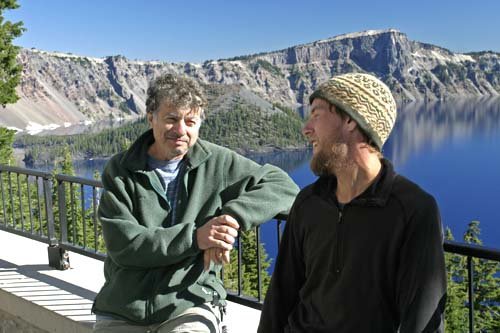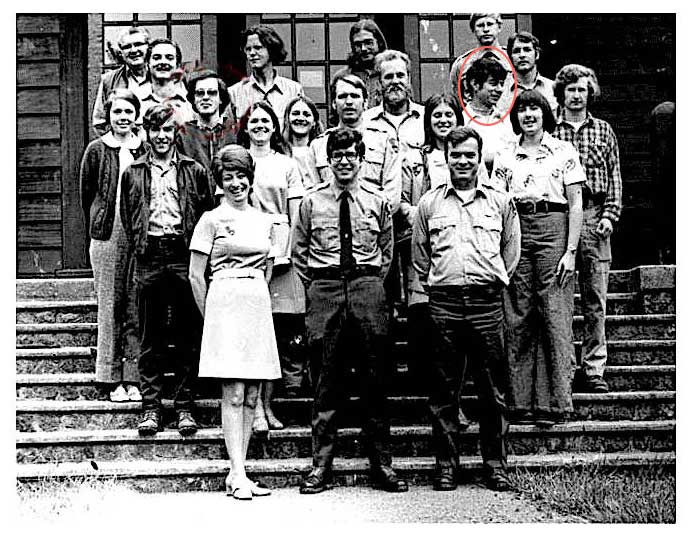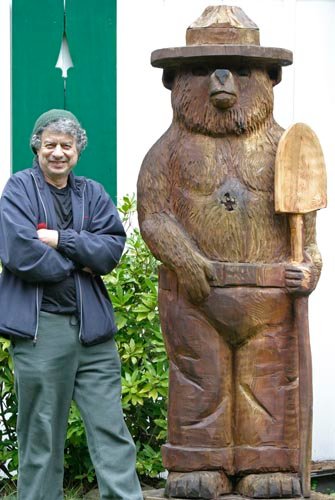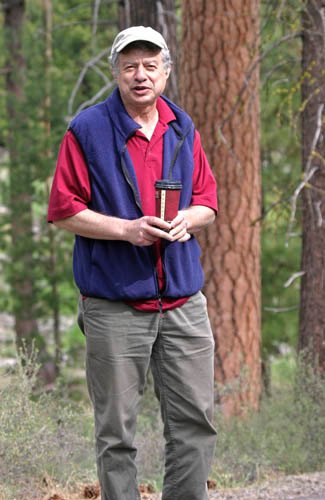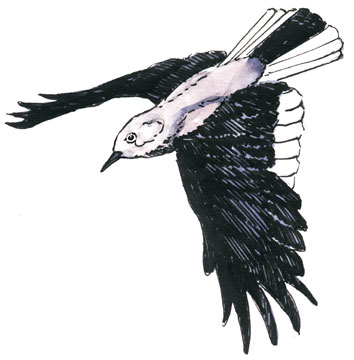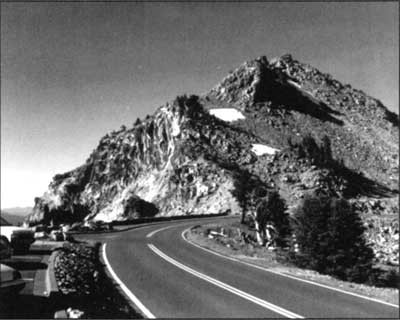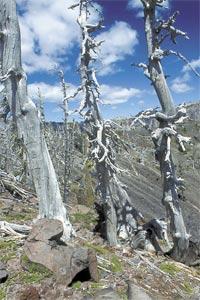Ron Mastrogiuseppe, June 3, 1942 – May 10, 2020.
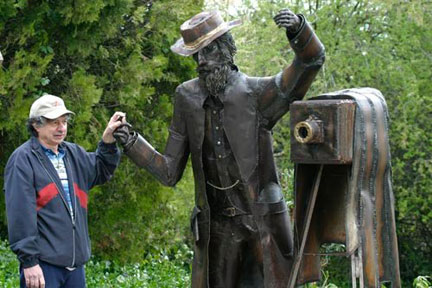
Ron Mastrogiuseppe was Crater Lake Institute’s founder and president
Today, Crater Lake Institute’s free website regularly tops a million viewers a month, a real tribute to Ron’s rare vision and endless energy focused on Crater Lake National Park.
Ron grew up among the fragmented, logged deciduous forests of West Virginia’s Appalachian Mountains and graduated from West Virginia University with a B.S. in forest science. His first Forest Service job was as a timber cruiser and as a fire lookout at historic Bessie Rock with a view into Crater Lake National Park.
Ron’s first exposure to professional naturalist activities was through the mentoring of Dick McP. Brown, Chief Naturalist. He also had the good fortune of working with Russ Grater’s naturalist team in 1965-66 at Sequoia-Kings Canyon and assisting the pioneering fire ecology studies of Drs. Richard Hartesveldt and Tom Harvey of San Jose State University, in Redwood Mountain Grove.
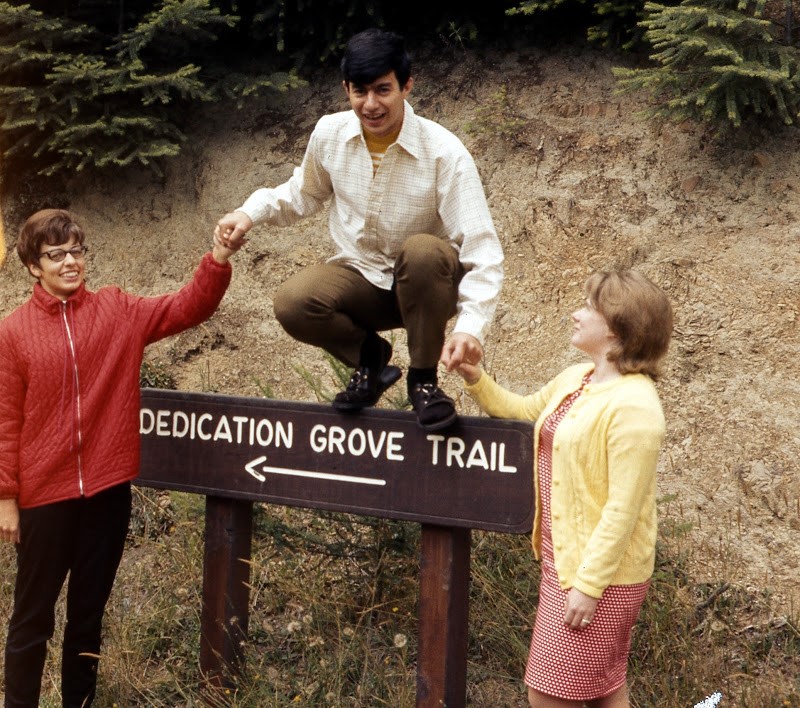
At Humboldt State, he studied coastal redwood ecology and researched the variation in Klamath Mtn. and southern Sierra Nevada foxtail pine populations for his M.S. Thesis research. Ron was the first naturalist at Redwood National Park and worked later as a forest ecologist following park expansion in 1978. He also assisted in pioneering the fire ecology and fire management program at Crater Lake following the drinking water crisis of 1975.
Following his retirement from the NPS, Ron began promoting the idea of an educational institute at Crater Lake to serve as a forum for debate of natural resource issues and to enhance the visitor experience through a lodging and learning program.
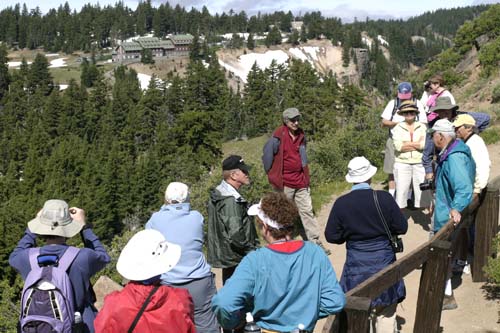 Ron leads an enthusiastic group up the Garfield Peak Trail at Crater Lake.
Ron leads an enthusiastic group up the Garfield Peak Trail at Crater Lake.
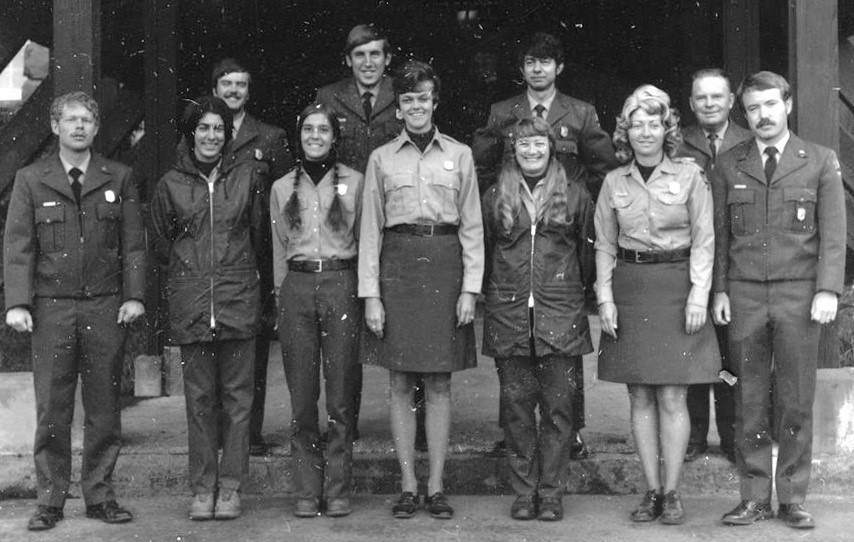
A Tribute from Steve Mark, Crater Lake National Park Historian
If it could be said that eccentricity served as Ron’s middle name, this line need not be used in a negative way. To be certain, he had his faults (as we all do), among them being a slavish devotion to certain patterns in his travels and appearance. In the latter regard, Ron believed in the adage “wear the old coat and buy the new book.” More than compensating for these quirks was his enthusiasm about intellectual, and sometimes actual, adventures. This could be infectious, and in my case, led to visiting places as diverse as Humboldt Redwoods State Park (particularly memorable happened to be the day after the Dyerville Giant fell, as well as attending the seventy-fifth anniversary celebration for the Save-the-Redwoods League), seeing the Fort Rock Cave while it was still private property, and driving to a conference in Missoula—one marking the centennial of national forests, as well as tree hunting in unexpected places that still harbor foxtail pine, Baker cypress, and Alaska yellow cedar.
I first met Ron in the summer of 1989 at Crater Lake, an occurrence that eventually led to finding a cadre of people I might not have met any other way, particularly those who had been intimately associated with the park. Less than three years later, when an annual publication called Nature Notes from Crater Lake was revived, Ron began a decade-long effort (from 1992 until 2002) to contribute articles to it. We co-authored several of these on important topics, all of which can be accessed through the website of the Crater Lake Institute. It should be noted that Ron wrote at least one piece for Nature Notes during each of those years, being the only one of my recruits (as editor) to do so. These were completed, of course, gratis—the only compensation consisted of complementary copies from the Crater Lake Natural History Association.
Beyond his literary efforts, Ron also found those who might use their time and talents to volunteer at Crater Lake and/or the Institute. He made the award ceremonies for the latter happen, which were gala occasions for celebrating the achievements of people too often overlooked by the National Park Service. Both Ron and Joy helped the park’s library, interpretive programs, and research efforts in quiet and inestimable ways. He made contacts that helped me personally, expanding my horizons in a variety of fields as diverse as archaeology, botany, geology, or forestry. Ron also took the time to maintain old friendships and acquaintances in the arts or sciences that might benefit Crater Lake National Park in some way. In this respect, I am reminded of lines by Emily Dickenson in what was perhaps his favorite poem:
I died for beauty, but was scarce
Adjusted in the tomb,
When one who died for truth, was lain
In an adjoining room.
He questioned softly why I failed?
“For beauty,” I replied.
“And I for truth, the two are one,
“We brethren are,” he said.
And so, as kinsmen, met a night,
We talked between the rooms.
Until the moss had reached our lips,
And covered up our names.

A Tribute from Owen Hoffman, Crater Lake Institute board member and former NPS interpretive ranger.
I first met Ron in 1967 at Crater Lake. It was like meeting a living legend. Ron was often talked about by my professors at San Jose State, Drs. Harvey and Hartesveldt who he worked with in studying the effects of controlled burns on the giant sequoia in Sequoia National Park. During our first face to face meeting, I recalled that we argued about the historic evolution of the scientific nomenclature of the giant sequoia. I don’t believe he gave me any benefit of the doubt at that time.
Later, in 1999 thirty two years later, we met once again at Crater Lake. Steve Mark introduced us. We hit it off immediately.
Steve warned me that Ron was somewhat of an eccentric. Ron would talk about Sasquatch, the green flash at sunset, most stars being double, the age of the great caldera being 7,700 years instead of 6,700 years old, etc. I thought that much of this was BS.
Then, as I steadily improved my knowledge of astronomy, I found out that he was right on nearly all accounts, except perhaps Sasquatch.
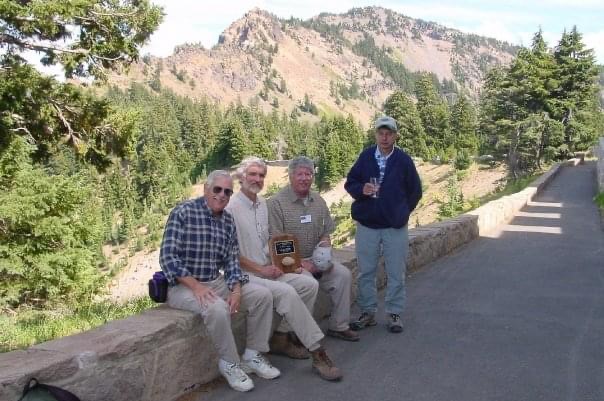
2002, the CLI Award presented to Dr. Douglas W. Larson. (Rod Cranson, John Salinas, Larry Smith, Doug Larson, Owen Hoffman and Ron.
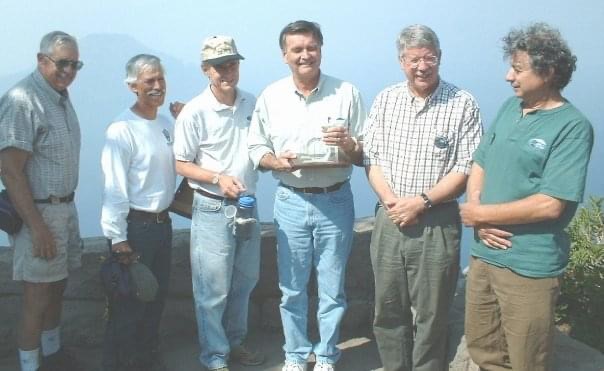
With Rod Cranson, Dr. Charles Bacon, Owen Hoffman, and Ron in 2003 when presenting the CLI award to Dr. Bacon at Crater Lake.
In 2004, we invited John Lowry Dobson to receive the annual award from the Crater Lake Institute. You should have seen Ron and John go at it in conversation. Two gifted right-brained personalities together in one car and in one lodge room. What great entertainment! That event allowed me the chance to do an oral history interview with John Dobson for the NPS (Steve Mark).
My last time seeing Ron was with Ortrud and yourself in Spokane, WA in the fall of 2005.
I’ll miss Ron. He made learning about nature fun. I really enjoyed watching his special gift with people and animals.
In 2004, to qualify for park housing, Ron volunteered to do roving interpretation for the Friends of Crater Lake. I watched him interact with people and their pets at the corrals and at Sun Notch overlooks. He was amazing in the special way he would immediately establishing rapport with all he would meet.
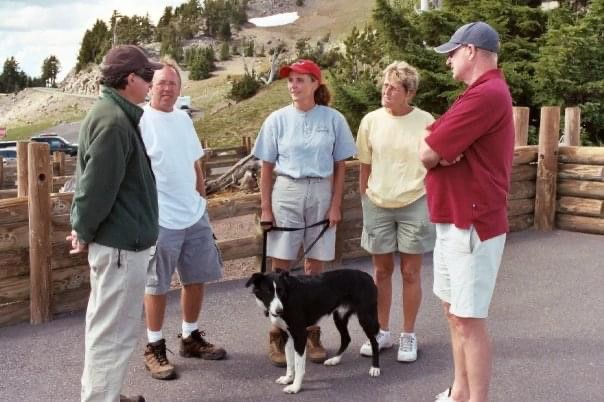
2004 at the Corrals talking about his favorite place.
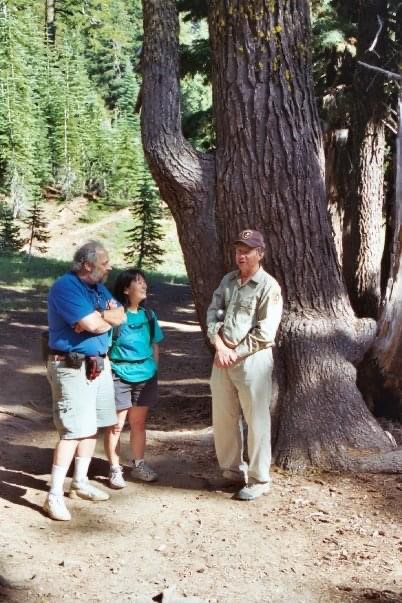
I am most saddened to know that he has passed on after such a long struggle. I cannot help but think that the virus may have had some effect on him.
I am sorry he is now gone. He is missed. My life was made richer for having known him.
Your friends,
Owen and Ortrud Hoffman

Ron at Crater Lake Visitor Center in 2008, with Crater Lake Institute’s Eifert poster over his head. Ron was responsible for many such paintings for Crater Lake Institute’s art collection.
From Leonel Arguello, Redwood National and State Parks Chief of Resource Management and Science:
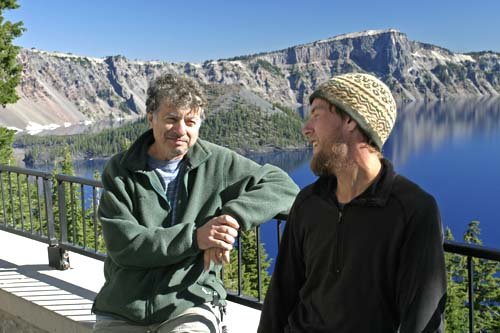
Some of Ron’s published writings:
Other pages in this section
